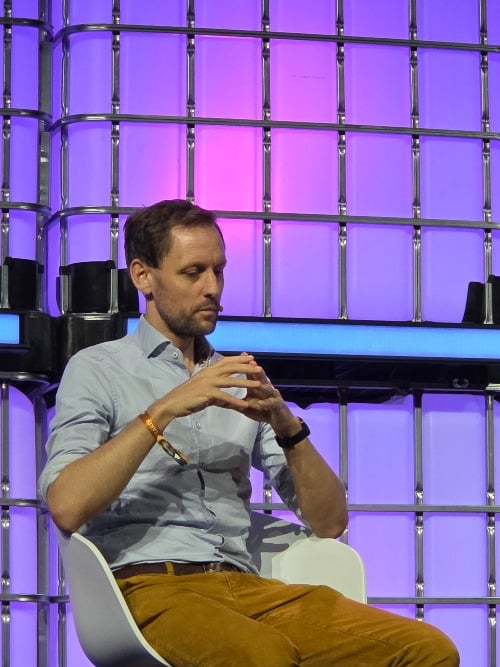In the world of quantum computing, where the theory is clear but the practice is still evolving, Jan Goetz — co-founder and CEO of IQM, which develops quantum computers — takes the stage at the Web Summit in Lisbon to distinguish between what can already be understood and what still eludes human perception.
During his speech, Goetz emphasized how the mathematics underlying quantum phenomena is “perfectly clear and coherent,” but what remains challenging is explaining and intuitively accepting it, as we have no direct experience of it.

“When we drop a bottle, we understand gravity because we observe it,” he explained. “But with quanta, it’s different: we don’t see photons or atoms in two places simultaneously, and for this reason, the human mind struggles to conceive it.”
It is this gap between theory and perception that makes the communication of quantum physics as fascinating as it is complex.
IQM is the company with the capacity to produce the highest number of quantum computers per year. Up to 20 each year.
On the technological front, Goetz believes that the so-called quantum advantage, or the moment when quantum computers will truly surpass traditional supercomputers on practical problems, is no longer a distant utopia.
According to IQM estimates, “the first real applications will arrive in three or four years,” especially in the field of molecular simulation.
In recent years, several companies have published their hardware roadmaps, showcasing tangible progress: quantum computers are becoming increasingly powerful, and research communities are already able to execute algorithms linked to real-world applications, albeit limited to “toy problems”.
Goetz provides a concrete example: “We can optimize the schedule of a few trains at a few stations, but not yet the entire Portuguese railway system.” The current limitation is the size of the processors, still too small to tackle industrial-scale problems.
Simultaneously, Goetz emphasizes the importance of developing not only the hardware but also quantum software, a field still in full evolution. “The final architecture has not been defined: this is why we believe in an open approach, where the community co-develops the software with us.” IQM, in fact, collaborates with major computing centers to make its computers accessible and keep the software modular and open source.
Among the most recent partnerships, the one with NVIDIA stands out, with which the company has co-developed solutions for quantum error correction.
Goetz identifies a tremendous opportunity right in the intermediate layer of the software stack: the so-called quantum firmware, which is the level that connects hardware to algorithms. “It’s an area still underdeveloped but with enormous potential,” he states. “Those who manage to optimize this part can achieve significant performance improvements.”
The final message is clear: quantum innovation requires openness, collaboration, and long-term vision. Only in this way can the promise of quantum computing — currently confined to laboratories — become a concrete and transformative reality within the next decade.